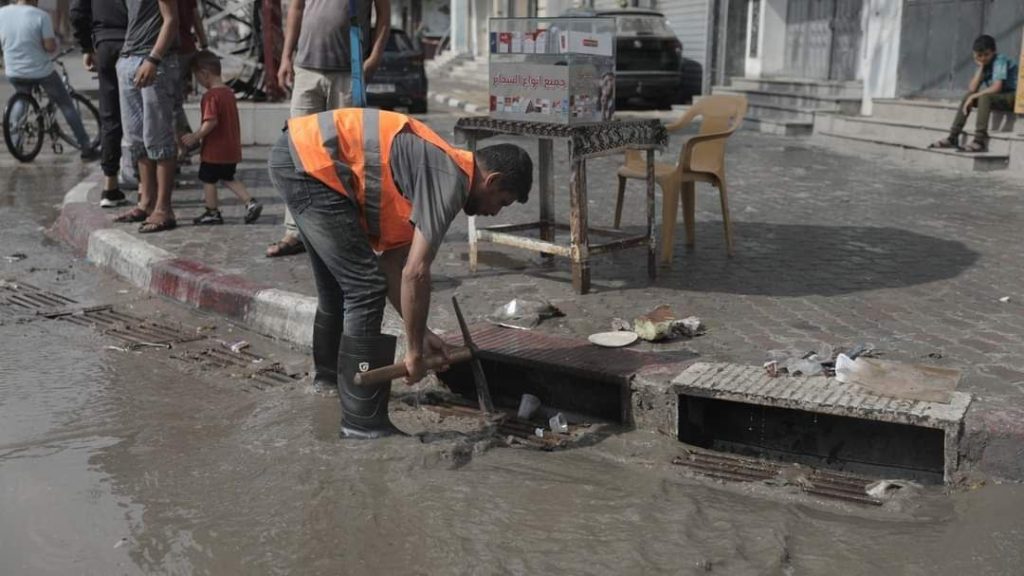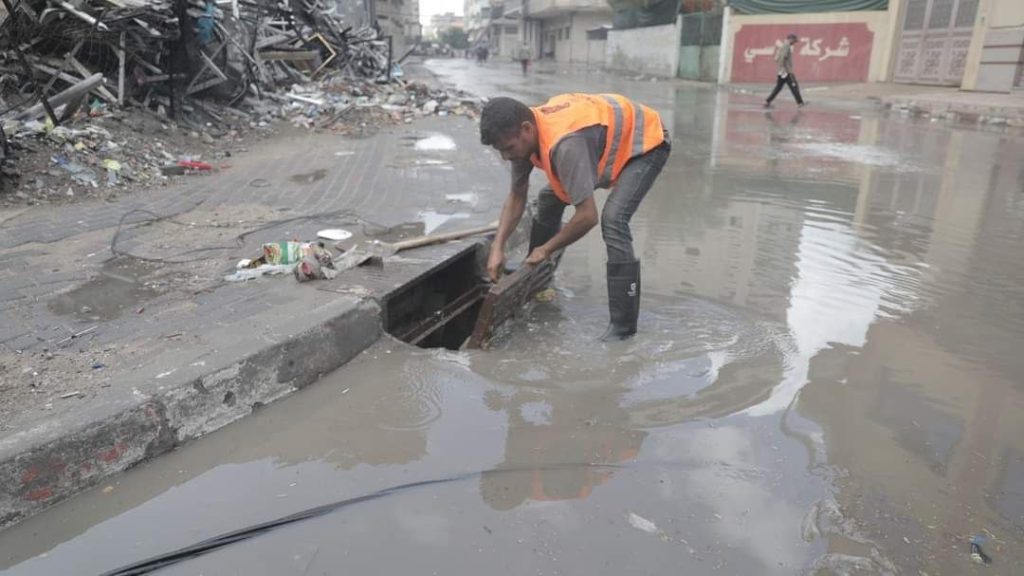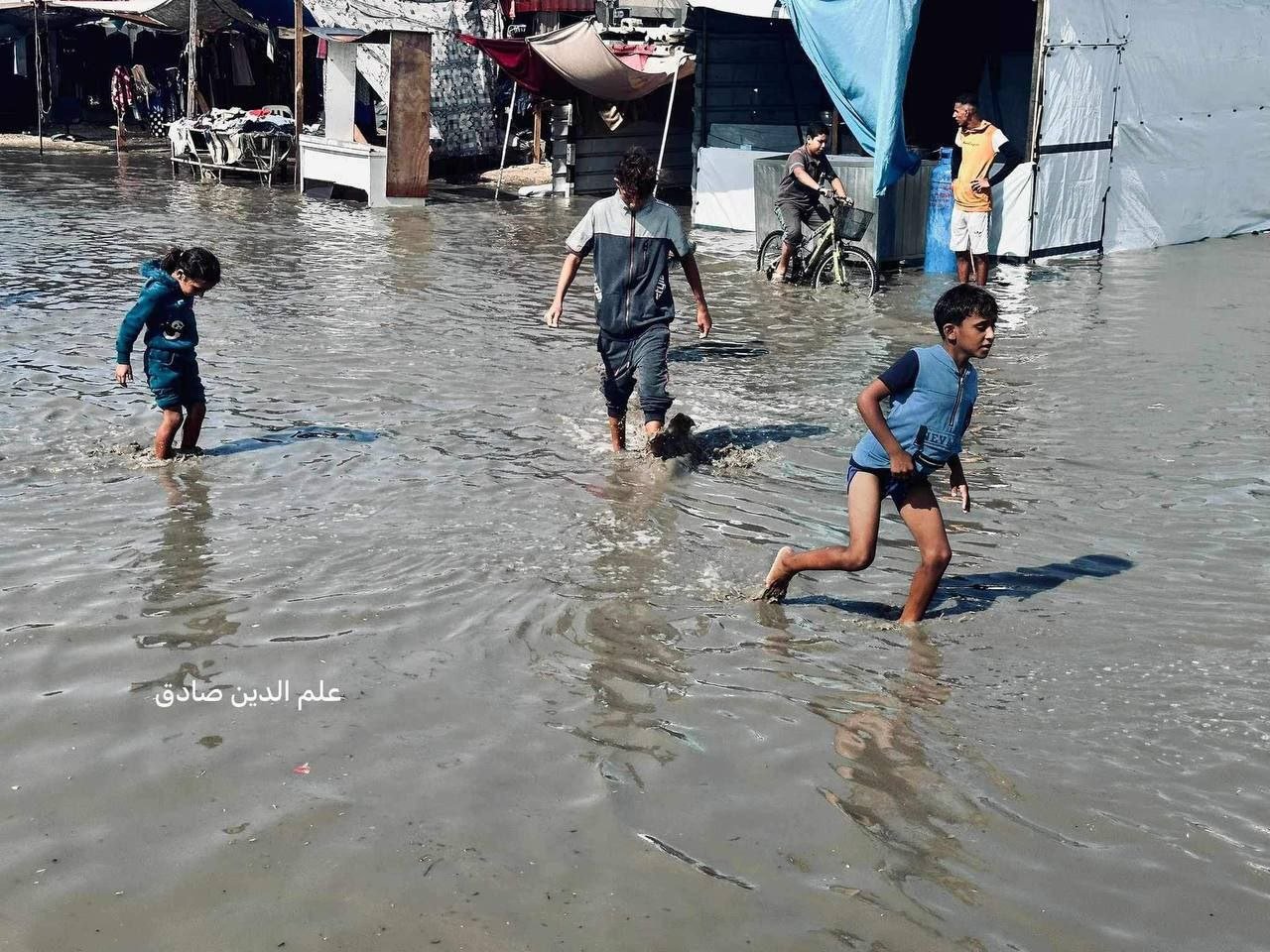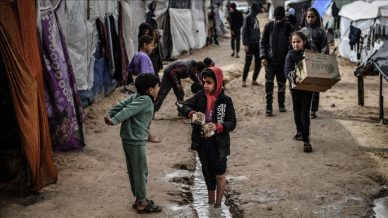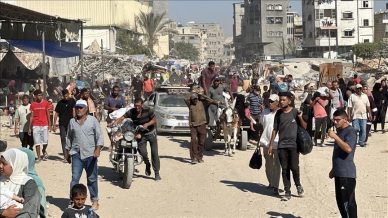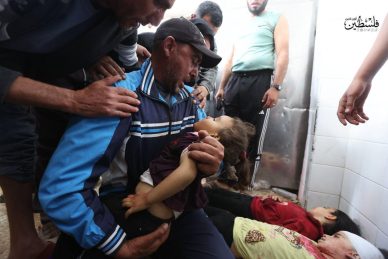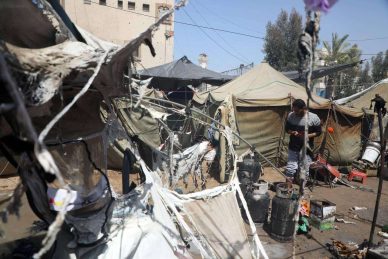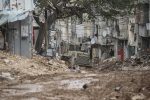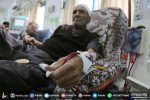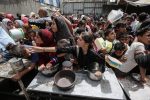GAZA, (PIC)
Around the world, people await winter with great anticipation; it is a season of harmony and family warmth. However, in the Gaza Strip, the situation is quite different when it comes to rain, which is a heavy burden for them. This is not a complaint, but rather an understanding that winter will be a disaster for their tattered tents, especially since they have been displaced from their homes for nearly a year.
“We are drowning” is the most frequently heard phrase in Gaza today after the sky blessed them with generous rain, soaking their belongings and flooding their simple homes. Everyone in the tents repeats this well-known phrase: “We are drowning… What do we do? Where do we go?” Despair, frustration, and pain fill the air.
Their tents have become like scattered islands in pools of water and mud, while children in tattered clothes try to prevent water from entering their tents, hoping their efforts might protect what little they have. Yet they fail, feel sorrow, and undoubtedly, their pain and suffering intensify.
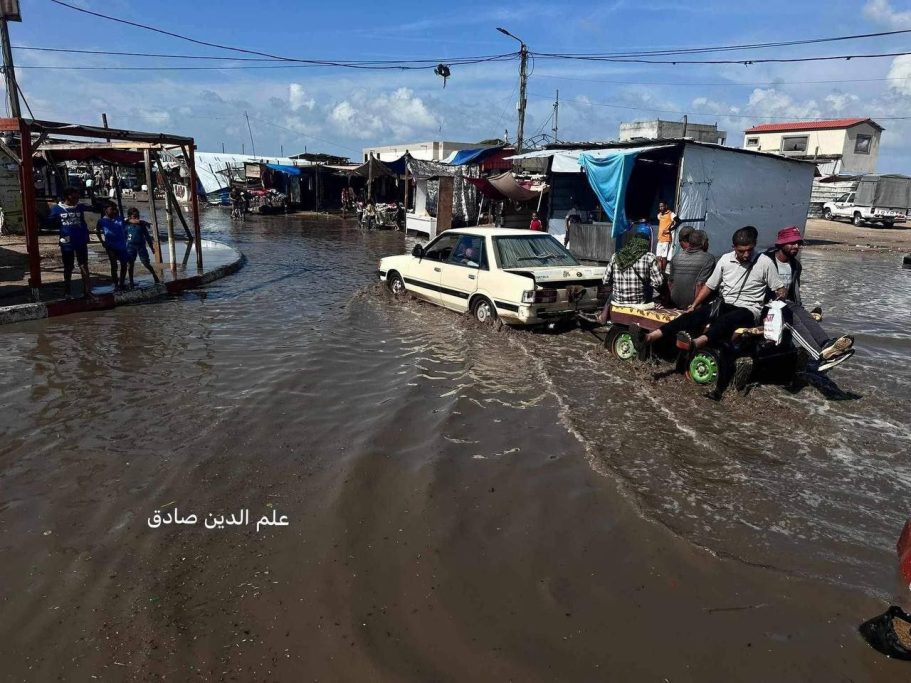
In the Mawasi area west of Khan Yunis, our reporter roamed through the overcrowded tent area, and the scene spoke volumes, tattered tents being battered by heavy rain, with the same outcome: “Everything is drowning.” Our reporter could barely navigate between the tents of the displaced, as mud and water puddles surrounded them. He encountered an elderly woman named Um Iyad (70 years old), who said, “I have nothing to say; it’s enough that we are drowning from the first winter rains.”
Winter has not officially begun yet; today, September 21, marks the first day of autumn. People are wondering about their fate as winter truly sets in and deep depressions begin, all while they continue to be displaced and suffer in their dire conditions. Tens of thousands of displaced individuals are demanding new tents, shelter from the winter, heavy blankets, and clothing. Everyone is asking for a return to their homes, even if they are destroyed.
Citizen Inshirah Al-Fleet, who lives in a tent on the beach of Deir al-Balah, cries bitterly and says, “I haven’t slept all night; we put sand barriers around the tent to protect us from the waves and the rain.” She adds to our reporter, “What do we do? Enough of what is happening to us. In summer, we were killed by the heat; now we are drowning in the rain. Where do we go? What do we do?”
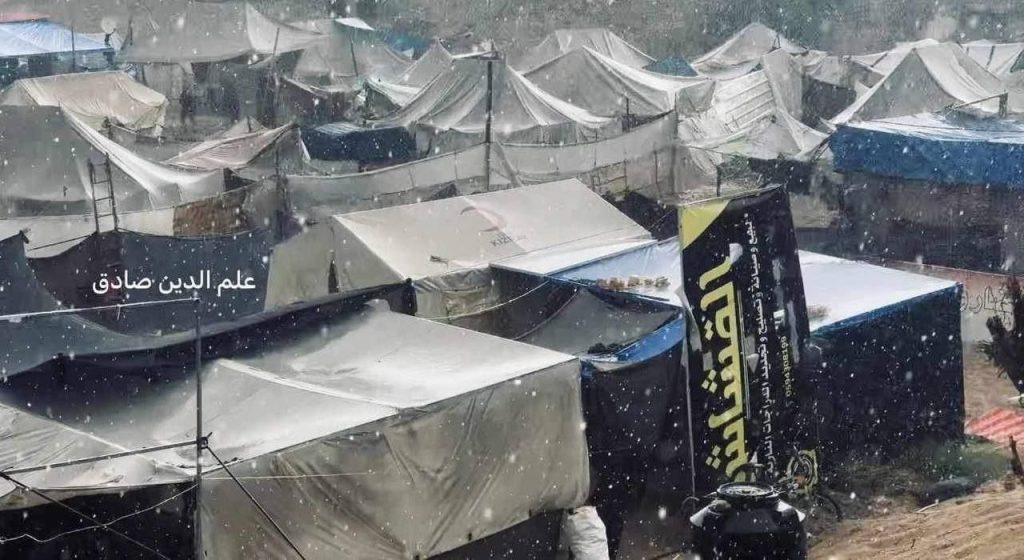
Citizen Ibrahim Al-Bukhari, displaced from the Rimal neighborhood, said, “A few days ago, a wave came and took away two tents. The sea flooded us and soaked our clothes, and the barriers we built were ineffective.”
Meanwhile, Ahlam Abu Taimeh, while preparing new sand barriers with her children, said, “We made sand barriers, but they collapsed after a small rain that hit the area, and our tent was flooded. We don’t know what we will do during the heavy weather and the cold days ahead.”
Khaled Abu Shawish, a 33-year-old who recently got married and lives in a tent, told our reporter that his tent failed its first winter test, as the strong winds tore parts of it apart, in addition to it being flooded with water. He continued, “The situation is catastrophic and very difficult. I call on the world to intervene to put an end to this suffering and the great disaster.”
The rains that fell last week revealed an impending environmental and health disaster for millions of displaced people who are crammed into overcrowded tents or neighborhoods that were bombed in central and northern Gaza, where almost no infrastructure remains.
According to Gaza’s Government Media Office (GMO), the Israeli army has destroyed 655,000 meters of sewage lines and 330,000 meters of water lines during the ongoing genocide. This means that displaced families across Gaza will face two choices during the upcoming winter, when flooding is becoming increasingly common: either drown in wastewater in the devastated urban areas of Gaza or be swallowed by the rising tide in the beach camps.
On September 14, the GMO issued a report indicating that the number of displaced people has been continuously increasing in recent months, documenting the existence of 543 shelters and displacement centers throughout the Strip, which is on the brink of a true humanitarian disaster with the arrival of winter, leaving nearly two million people homeless.
The report also pointed out that the government’s field assessment indicates that more than 100,000 tents in Gaza are uninhabitable due to erosion and damage, clarifying that most of the tents are made of plastic and worn-out fabrics.
The GMO urged the international community to save the two million displaced residents of Gaza before it is too late.
